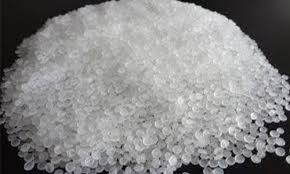Introduction
Polyvinylidene fluoride (PVDF) is a semi-crystalline thermoplastic polymer that has many industrial applications. PVDF is known for its piezoelectric and pyroelectric properties. However, the question that arises is whether PVDF is a conducting polymer or not. In this article, we will provide a comprehensive guide answering the question, "Is PVDF a conducting polymer??".
What is a Conducting Polymer?
A conducting polymer is a polymer that conducts electricity. Such polymers possess a conjugated molecular structure that allows for electron flow through the material. Common examples of conducting polymers include polypyrrole, polythiophene, and polyaniline.
PVDF's Crystalline Structure
PVDF has a highly crystalline structure due to its all-trans confirmation. This would suggest that PVDF may not be a conducting polymer since its structure does not contain conjugated double bonds.
PVDF's Piezoelectric Properties
PVDF is well-known for its piezoelectric properties, which allow it to convert mechanical energy into electrical energy. It is possible to modify PVDF's piezoelectric properties by introducing dopants, which could potentially alter its electrical conductivity.
PVDF's Pyroelectric Properties
In addition to its piezoelectric properties, PVDF also possesses pyroelectric properties, which allow it to generate an electrical current in response to a temperature change. This property is also related to the polymer's crystalline structure.
Doping of PVDF
Doping PVDF with certain materials can alter its electrical conductivity. For instance, doping PVDF with carbon nanotubes has been shown to increase its electrical conductivity. Similarly, doping PVDF with silver nanoparticles can create a composite material with enhanced electrical conductivity.
PVDF's Electrical Conductivity
Despite its crystalline structure, PVDF can be made conductive under certain conditions. For example, stretching PVDF changes its molecular structure, thereby creating electrical conductivity. Additionally, the incorporation of dopants can increase PVDF's electrical conductivity.
Limitations of PVDF as a Conducting Polymer
Although PVDF can be made conductive, it is not an ideal material for use as a conducting polymer due to its low electrical conductivity. PVDF is often used in applications where the piezoelectric, pyroelectric, or dielectric properties are more important than electrical conductivity.
Applications of PVDF
PVDF is commonly used in a variety of industrial applications, ranging from batteries and capacitors to sensors and membranes. Its pyroelectric and piezoelectric properties make it useful in devices that require energy conversion.
Conclusion
In conclusion, PVDF is not typically considered a conducting polymer; however, it can be made conductive under certain conditions. PVDF's piezoelectric and pyroelectric properties make it a valuable material for use in energy conversion applications.

